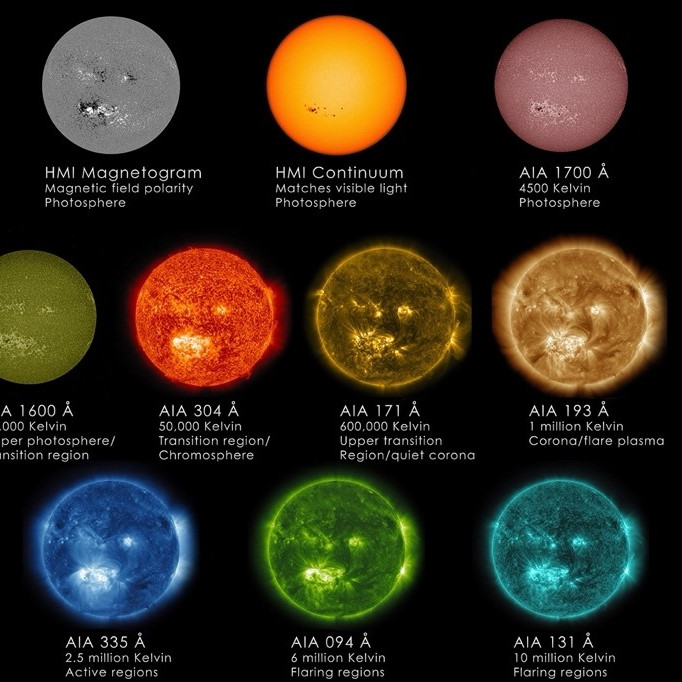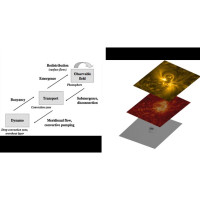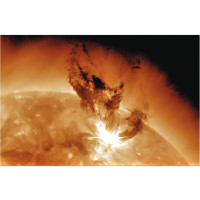Solar Physics and Plasmas
 Matter in the Sun is in an aggregation state called plasma, characterized by the presence, in addition to neutral atoms, also of a high percentage of ions and electrons. Due to its proximity, the Sun allows us to directly observe with high spatial resolution the properties of a plasma, in much greater detail than is possible for other astrophysical objects. In addition, the recent development of instrumentation and techniques used for the measurement of solar magnetic fields (spectropolarimetry), both from Earth and from satellites, has further enriched our knowledge on how localized magnetic fields and solar plasma can interact.
Matter in the Sun is in an aggregation state called plasma, characterized by the presence, in addition to neutral atoms, also of a high percentage of ions and electrons. Due to its proximity, the Sun allows us to directly observe with high spatial resolution the properties of a plasma, in much greater detail than is possible for other astrophysical objects. In addition, the recent development of instrumentation and techniques used for the measurement of solar magnetic fields (spectropolarimetry), both from Earth and from satellites, has further enriched our knowledge on how localized magnetic fields and solar plasma can interact.
Magnetic activity in the solar atmosphere

Faculty: Alessandra Giunta
The interaction between plasma and magnetic field is the common denominator of the many phenomena of activity (spots, faculae, prominences, coronal loops) observed in the solar atmosphere. The magnetic field, after being generated and intensified by the dynamo mechanism at the base of the convective zone, emerges in the solar atmosphere where it can give rise to the formation of active regions, involving, almost simultaneously, optically thick and optically thin layers and giving rise to phenomena observable in wavelengths ranging from radio to X-rays, through processes characterized by an intrinsically three-dimensional nature.
Eruptive phenomena in the Sun and Space Weather

Faculty: Alessandra Giunta
Observations show that when the magnetic field topology of an active region becomes quite complex, the configuration can become unstable and a release of energy (flare) can occur, causing eventually an ejection of plasma from the solar atmosphere, giving rise to phenomena called coronal mass ejection (CME). These phenomena can have important consequences on the Sun-Earth environment and can trigger a whole series of processes (auroras, magnetic storms, arrival of charged particles in the Earth's ionosphere), which are now studied in the framework of Space Weather.